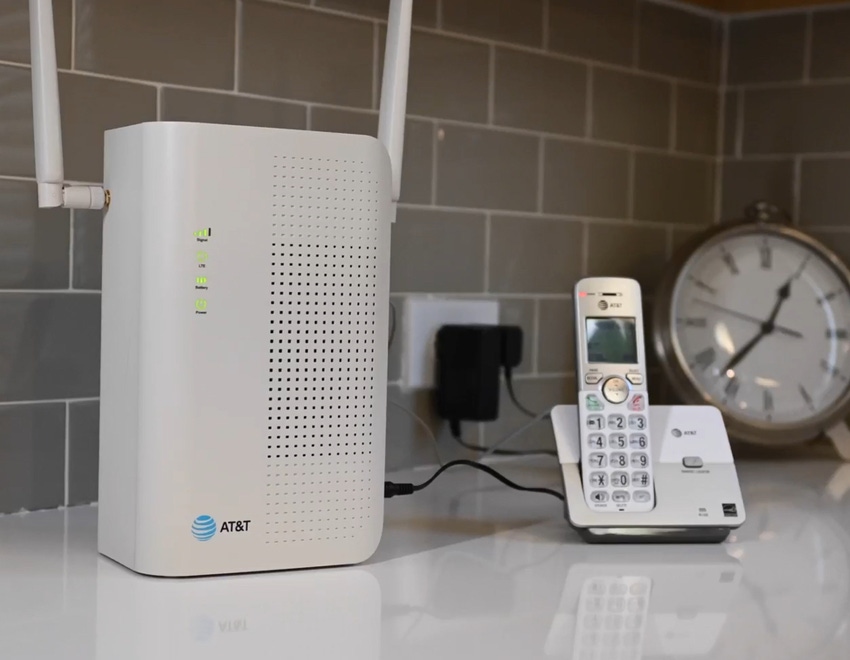AT&T intros wireless wired phone amid copper retirements
'AT&T Phone – Advanced' runs atop AT&T's wireless network as well as on a wired broadband connection. It could be offered where AT&T is retiring its copper DSL operations without a fiber alternative.

AT&T is now selling a new product that's intended to provide voice calling services across both the operator's wireless network as well as a wired Internet connection. It may be used in locations where AT&T is shutting down its copper-based DSL network.
"Instead of traditional wired phone lines, AT&T Phone – Advanced uses the AT&T cellular network and/or a broadband connection to provide your home telephone service. Once everything is set up, it works just like your traditional phone does now," the operator wrote on its website. "If the AT&T cellular network connection is unavailable, you'll stay connected via broadband."
AT&T also boasts that the new product sports all of the voice-calling features available on its legacy copper network as well as more advanced functions including battery backup power, call forwarding, and other services.
AT&T officials said the operator's new "AT&T Phone – Advanced" offering is available in Dallas and a handful of other markets the company did not identify. Company officials said the operator plans to expand the number of locations where AT&T is offering the product, though they did not provide details.
"The real value of this product, in our opinion, is in those 15-20 million households where AT&T is the current local (copper) phone provider today and is looking for regulatory relief," wrote Jim Patterson of Patterson Advisory Group in his weekly newsletter. "A lot of work has gone into creating a landline replacement product, and we look forward to seeing actual customer reaction to this Dallas/ Ft. Worth launch."
Indeed, AT&T has already positioned its fixed wireless access (FWA) Internet offering as a "copper catch" that will be available to some customers in millions of locations where it's dismantling its copper network and will not offer a fiber alternative.
From copper to fiber
AT&T is in the midst of a massive fiber network buildout program that involves expanding fiber connections to around 30 million locations by 2025. However, according to the financial analysts at Evercore, AT&T serves about 60 million locations with copper, and the operator is working to turn off that aging copper network. Meaning, after everything is done in 2025, analysts estimate at least 15 million AT&T copper locations won't be offered a fiber replacement.
Thus, AT&T could offer its wireless "AT&T Phone – Advanced" product to customers who subscribe to its voice calling services on its soon-to-be dismantled copper network as a way to keep them as a subscriber. An MVNO called Community Phone has been selling such a product since 2021.
Already AT&T is working to shutter its copper network across major swaths of the country. The operator recently alerted California regulators that it is planning to shutter its copper DSL network in locations throughout the state, including in big counties like Orange, Los Angeles, Riverside and San Bernardino. That's important because AT&T is the "largest carrier of last resort" (COLR), according to the California Public Utilities Commission (CPUC).
To be clear, AT&T isn't the only company shifting from copper to fiber and other technologies. Verizon, Frontier Communications, Windstream, TDS Telecom and others are making similar moves.
Nor is AT&T the only company offering newer calling technologies. For example, fiber operator Brightspeed recently announced the launch of its new Brightspeed Voice+ service through vendor RingCentral. And T-Mobile recently said it will offer its enterprise customers AI-powered summaries of customers' voice conversations, among other offerings, through its partnership with vendor Dialpad.
About the Author(s)
You May Also Like




.jpg?width=300&auto=webp&quality=80&disable=upscale)







